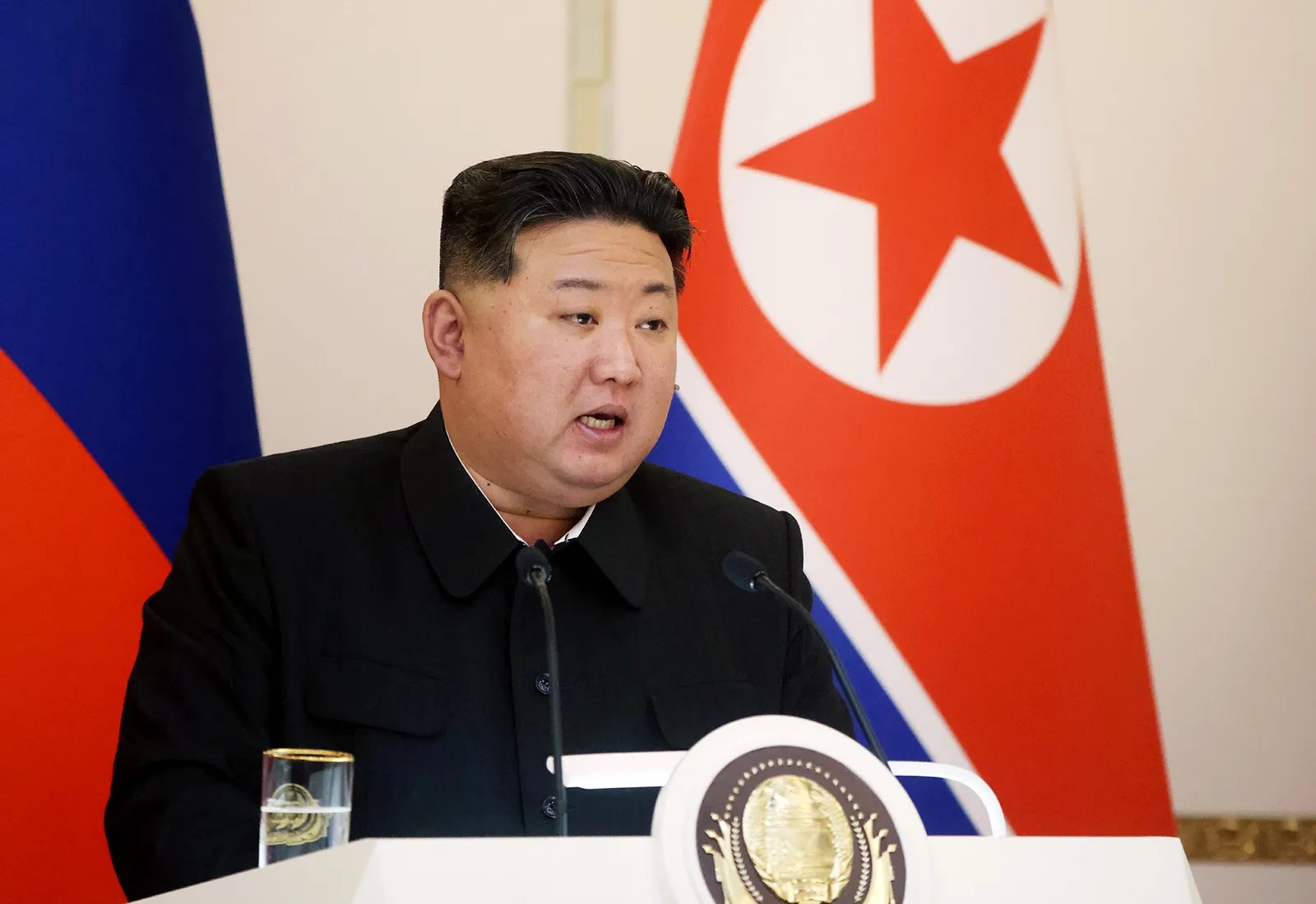
Kim Jong Un Showcases North Korea’s Most Powerful Nuclear Weapon at Parade

 :
| Updated On: 11-Oct-2025 @ 12:05 pm
:
| Updated On: 11-Oct-2025 @ 12:05 pmSHARE
North Korean leader Kim Jong Un presided over a grand military parade in Pyongyang, showcasing the country’s latest and most advanced intercontinental ballistic missile (ICBM), the Hwasong-20, which state media KCNA described as North Korea’s “strongest nuclear strategic weapon system.” The event, held on Friday night, commemorated the 80th anniversary of the founding of the Workers’ Party of Korea and followed a series of celebrations that began on Thursday.
The parade was attended by several prominent international dignitaries, underlining North Korea’s efforts to highlight its global relevance despite ongoing sanctions and isolation. Among the foreign guests were Chinese Premier Li Qiang, former Russian President Dmitry Medvedev, and Vietnam’s Communist Party leader To Lam. Their presence reflected growing cooperation between North Korea and its allies, particularly China and Russia, at a time of heightened tensions with the West.
The highlight of the parade was the public display of the Hwasong-20 ICBM, which analysts say underscores Pyongyang’s continued commitment to developing advanced long-range nuclear weapons. According to experts, the Hwasong series theoretically provides North Korea the ability to strike targets anywhere in the United States. However, major uncertainties remain regarding its actual operational effectiveness, particularly the precision of its guidance systems and whether its warheads can survive atmospheric re-entry — a crucial technical hurdle in delivering a reliable long-range nuclear strike.
Ankit Panda, a nuclear policy expert at the Carnegie Endowment for International Peace, noted that the Hwasong-20 represents the peak of North Korea’s ambitions in nuclear weapons delivery capability. He added that the missile is likely to undergo testing before the year ends. Furthermore, analysts believe the Hwasong-20 has been designed to carry multiple warheads, which would significantly increase pressure on the existing US missile defense systems. This capability would not only make interception more difficult but also enhance what Kim Jong Un views as a credible deterrence against Washington.
In his speech during the parade, Kim Jong Un offered warm praise and encouragement to North Korean troops serving abroad, particularly those reportedly fighting alongside Russian forces in Ukraine. He portrayed their involvement as heroic, arguing that their contributions extend beyond defending the homeland to participating in broader “outposts of socialist construction.” He further declared that the North Korean army must continue to grow into an “invincible entity capable of destroying all threats.”
Following the parade, Kim held a meeting with Dmitry Medvedev, underscoring the strengthening ties between North Korea and Russia. Medvedev praised North Korean soldiers for their participation in the Ukraine conflict, describing their role as a demonstration of trust and cooperation between the two nations. In response, Kim expressed his desire to deepen collaboration with Russia and pursue broader exchanges in multiple areas to achieve mutual goals.
Overall, the parade served multiple purposes for North Korea: a display of military strength, a signal of growing strategic partnerships with China, Russia, and Vietnam, and a reinforcement of Kim Jong Un’s leadership message of resilience, deterrence, and global relevance. While technical doubts about the Hwasong-20 remain, its unveiling highlights Pyongyang’s determination to project power and deter adversaries, particularly the United States.